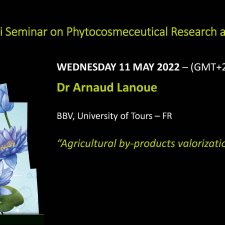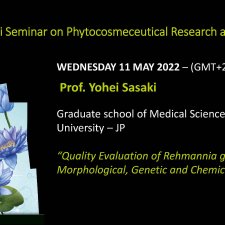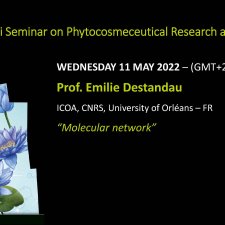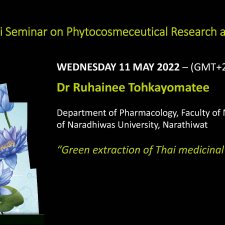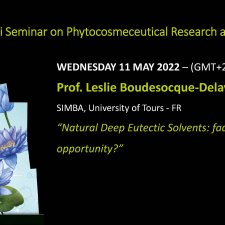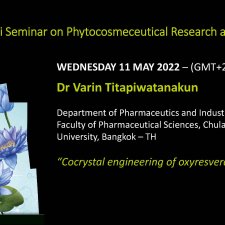Notice
Dr Bhanubong Bongcheewin - The Mint family (Lamiaceae) in Thailand- A potential material source for phytocosmeceutical application
- document 1 document 2 document 3
- niveau 1 niveau 2 niveau 3
Descriptif
Lamiaceae is the large family, consisting of more than 7,000 species worldwide. In Thailand, there are 52 genera, ca. 285 species enumerated for the Flora of Thailand account. The family is the important source for phytochemical compounds, such as essential oils, flavonoids, terpenoids. Some species with potential uses for cosmetics are reviewed.
Thème
Dans la même collection
-
Dr Arnaud Lanoue - Agricultural by-products valorization
Winemaking generates different biomolecule-rich byproducts, including pomaces (skin and seeds), lees, as well as other solid wastes like grape canes.
-
Prof. Yohei Sasaki - Quality Evaluation of Rehmannia glutinosa by Morphological, Genetic and Chemic…
Previously, the medicinal plant, Rehmannia glutinosa, is grouped into two types in Japan. However, previous reports of genetic analysis of R. glutinosa in commercial products suggest the existence of
-
Prof. Emilie Destandau - Molecular network
Specialised metabolites constitute a high valuable resource of bio-active compounds that are highly sought after for pharmaceutic and cosmetic applications. However, plant extracts are very complex
-
Dr Ruhainee Tohkayomatee - Green extraction of Thai medicinal plants
Extraction is a major step to separate bioactive compounds from raw material and medicinal plants, which extracted by the pharmaceutical industry, either with conventional methods or modern
-
Prof. Leslie Boudesocque-Delaye - Natural Deep Eutectic Solvents: fad or real opportunity?
NaDES appeared at the end of the 2010s following the work of Dai et al. Since then, the enthusiasm for these new green solvents linked to ionic liquids has continued to grow.
-
Dr Varin Titapiwatanakun - Cocrystal engineering of oxyresveratrol
Oxyresveratrol (ORV) is a compound found in the heartwood of Artocarpus lakoocha Roxburgh (Moraceae). It has diverse biological and therapeutic activities covering antioxidant, anti-inflammatory,

